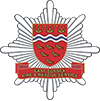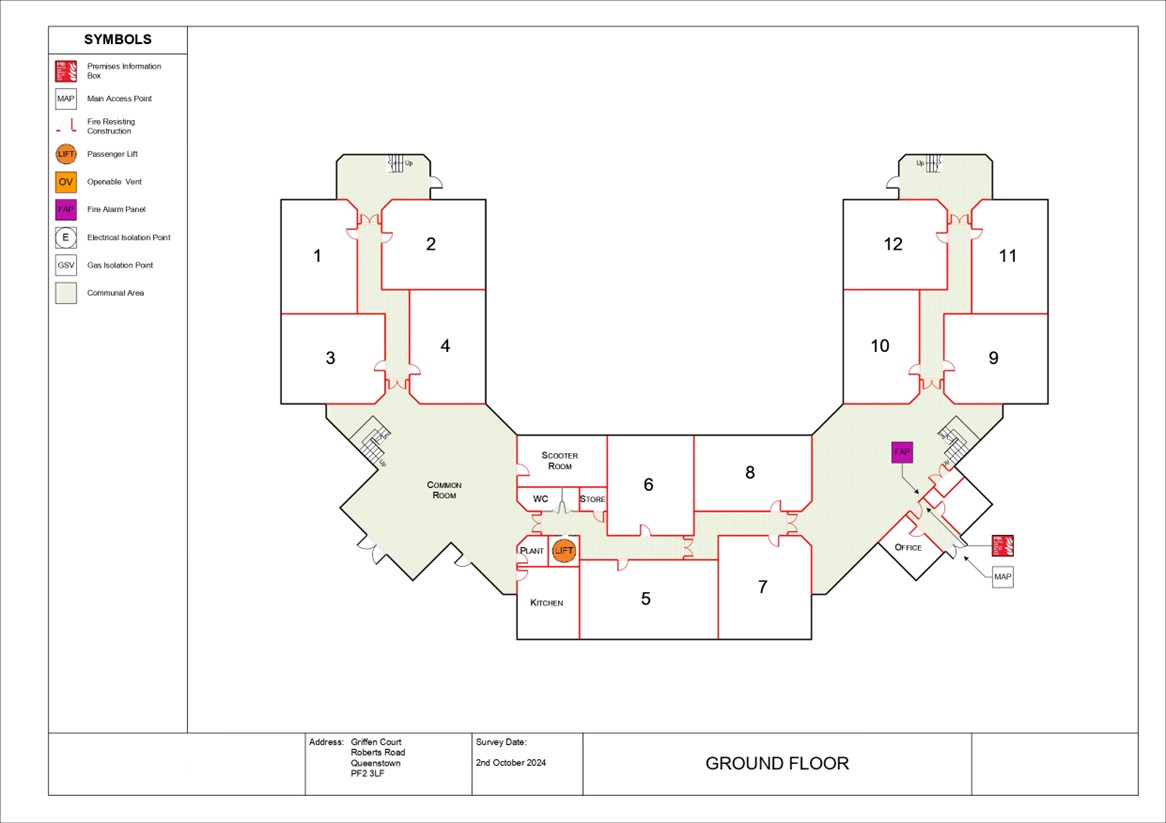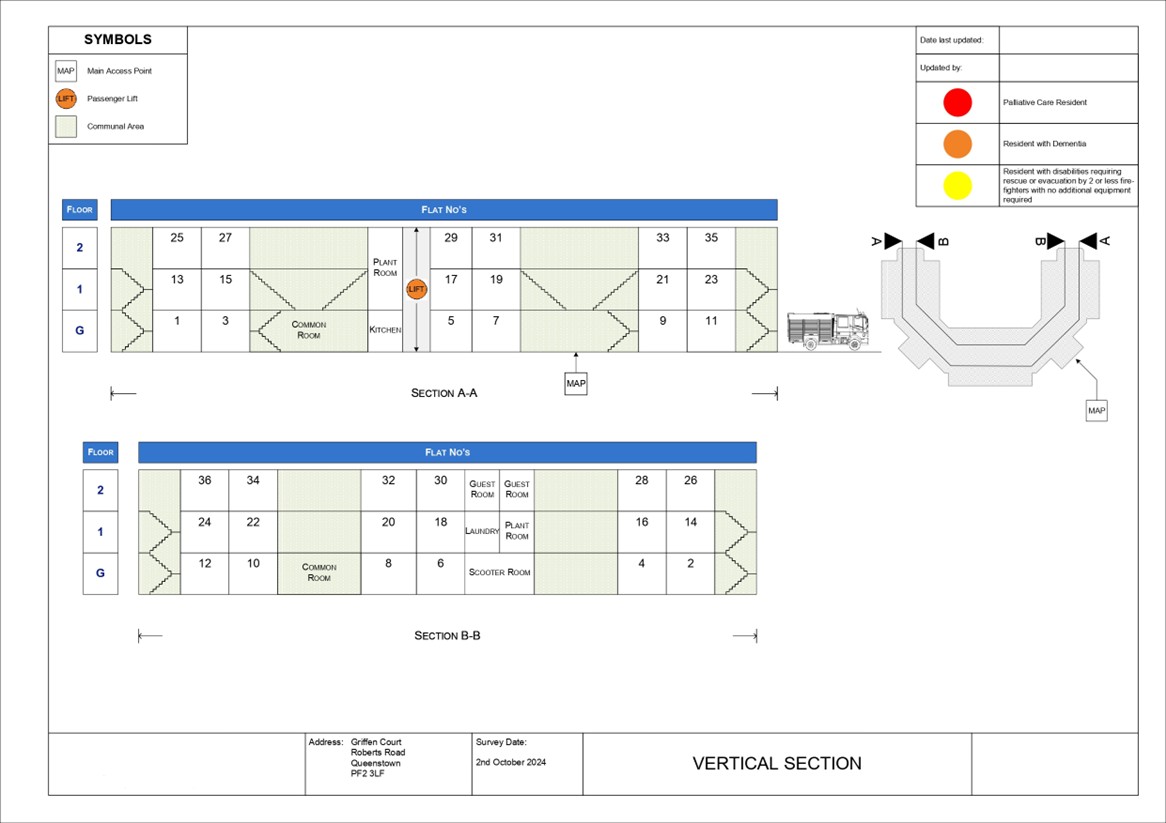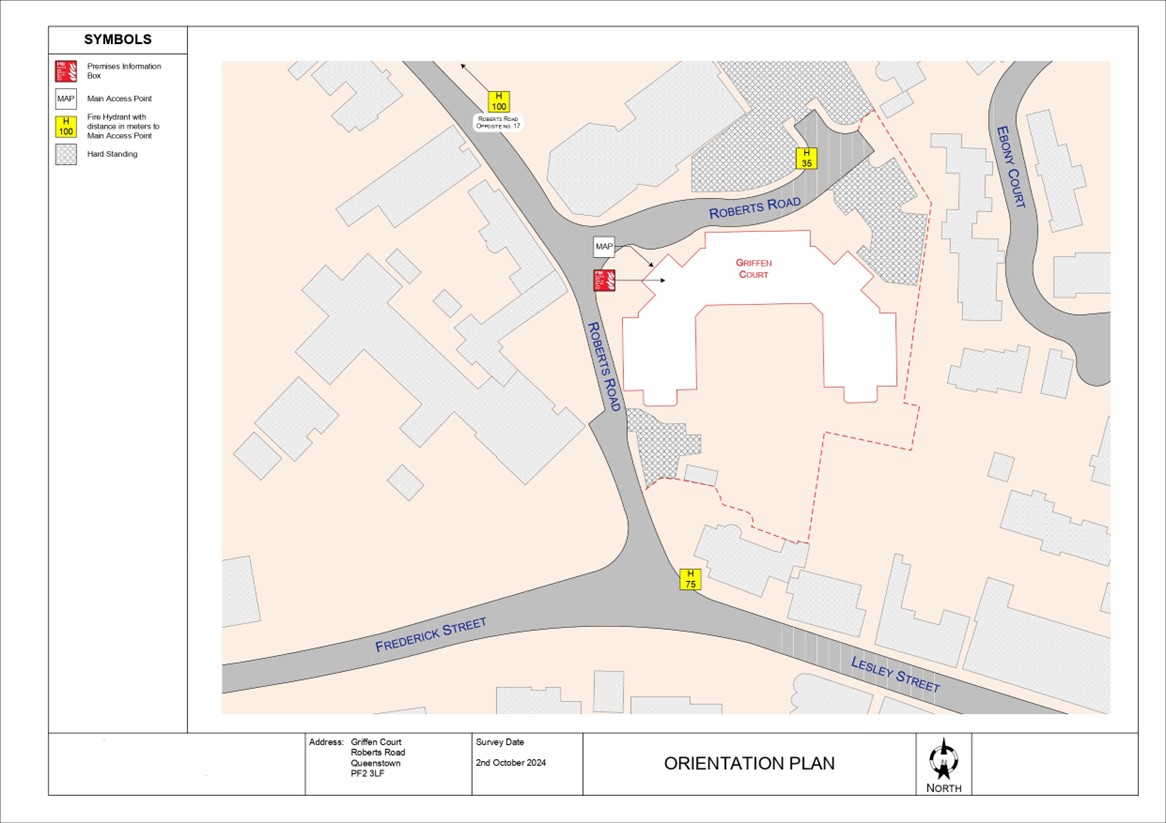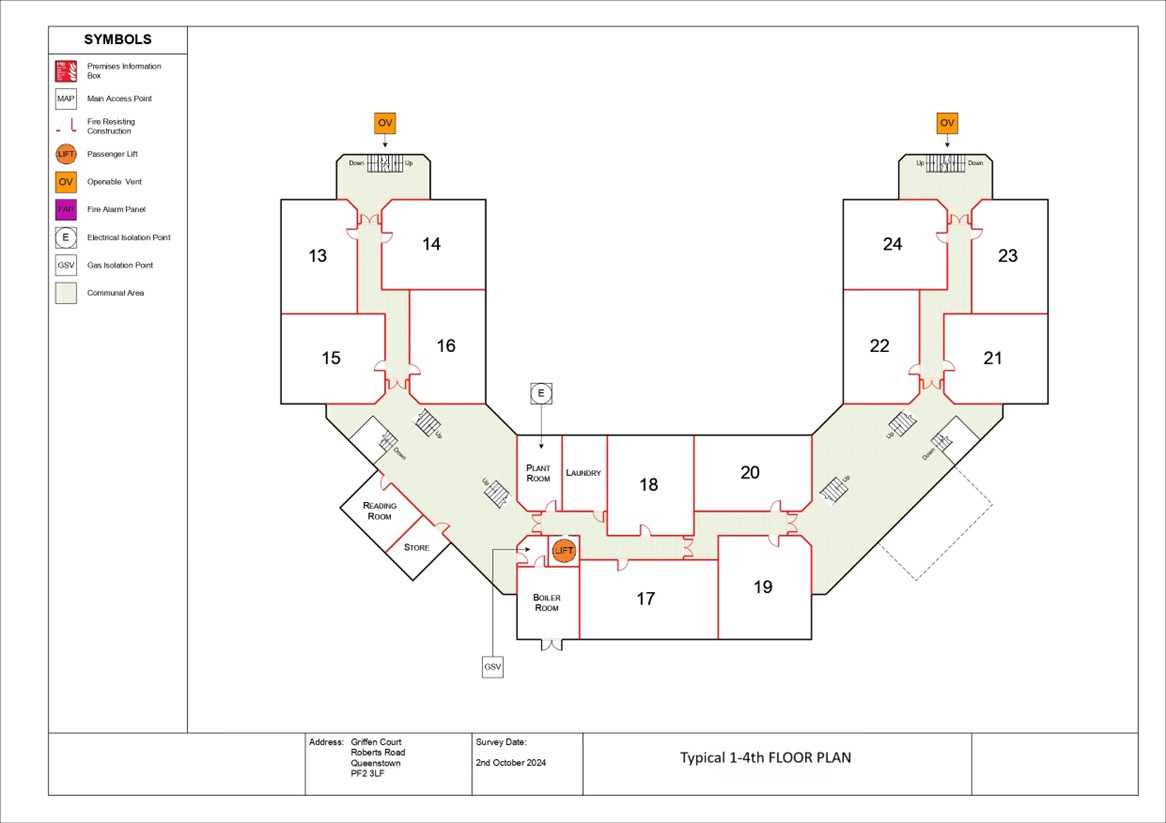Accurate and accessible floor and building plans are a vital component of fire safety in residential buildings. They support fire and rescue services by providing crucial information during emergencies, improving response times and decision-making.
What Are Fire Safety Plans?
Fire safety plans include:
- Floor plans: showing flat numbers, stairways, lifts, and fire-fighting equipment
- Building plans: detailing orientation, the layout, firefighting systems, and critical safety infrastructure.
These documents must be up-to-date, clearly labelled, and match the current layout of the building.
Who Needs to Provide Plans?
Under Regulation 6 of the Fire Safety (England) Regulations 2022, all high-rise residential buildings over 18 metres must provide both floor and building plans to the local fire and rescue service.
- These plans are usually stored in the building's Secure Information Box (SIB).
Regulation 6 – Floor and Building PlanS (GOV.UK)
Floor Plans - Features
- Clearly mark flat numbers and stairwells all in A3 size and laminated
- Identify / label stairwells and main entrance
- Indicate firefighting equipment: risers, extinguishers, control panels
- Use symbols that match national standards (see symbol key)
- Reflect real-world layout, keep plans updated when changes are made
Image: example of some symbols
- Floor and building plans are mandatory for high-rise residential buildings
- Must be accurate, legible, and match the current building layout
- Should be stored in your building's SIB for fire service access
List of Plans
The following is a list of PLANs and supporting documentation for use by Fire & Rescue Services; it can be supplied by Responsible Persons of a premises inside a secure information box.
- Orientation (SITE or BLOCK) PLAN
- FLOOR PLANs
- ON ARRIVAL INFORMATION sheet
- PEEP(s)
